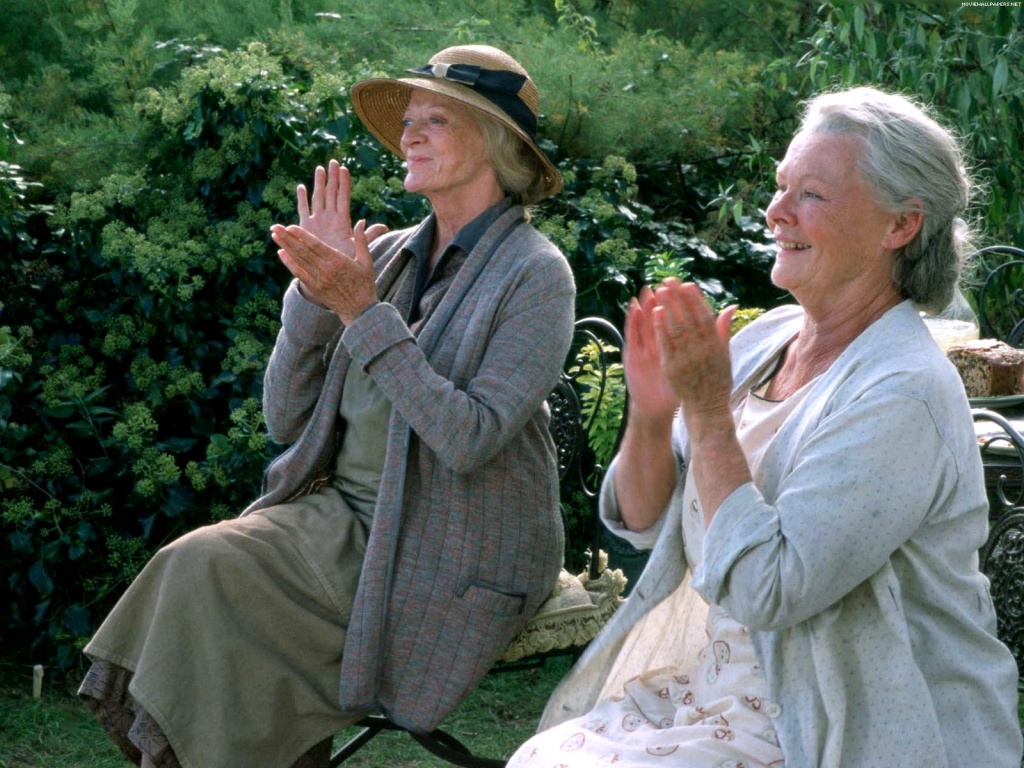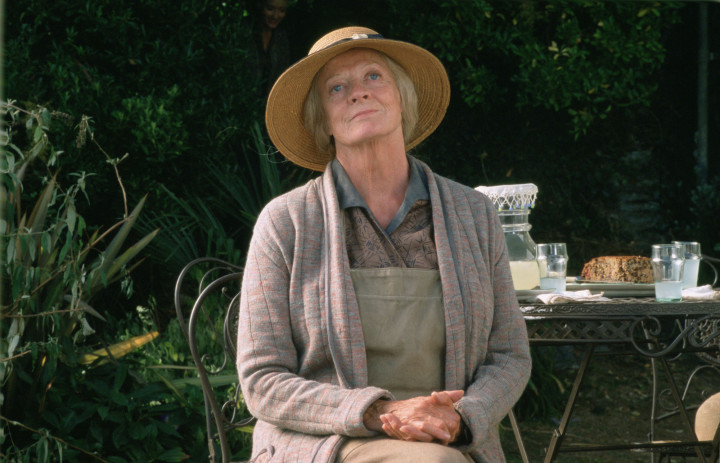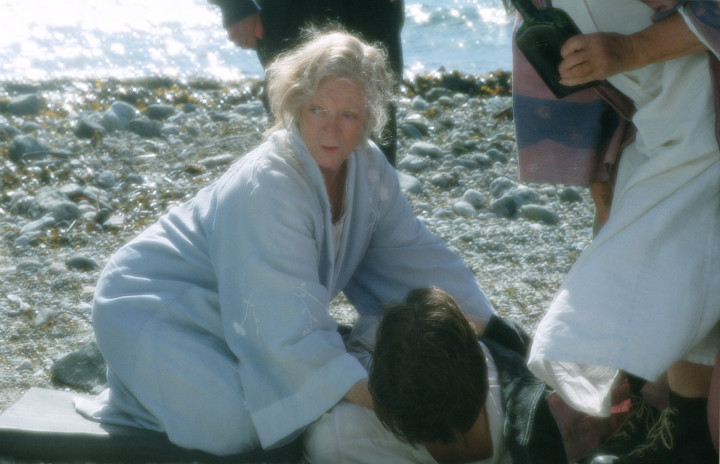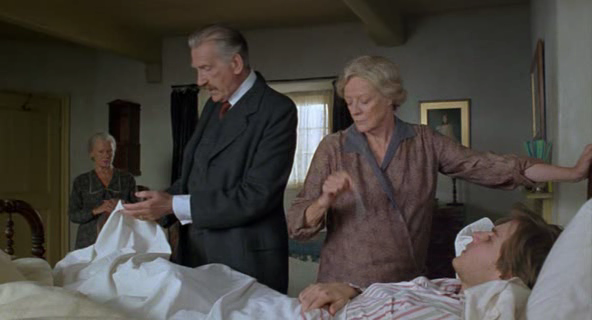Here is my original review from 2005: There’s a moment in The Sound of Music where Eleanor Parker appears on the scene with a pitcher of pink lemonade, announcing that the concoction is “not too sour, not too sweet.” To this Richard Haydn wryly comments, “Just too pink.” Having thus destroyed my street cred as a curmudgeon by being able to recall dialogue from The Sound of Music, I’ll say that this sums up the slight problem I have with Charles Dance’s writer-director debut, Ladies in Lavender: It’s just too lavender. Don’t misunderstand me: I liked the film a great deal. It’s an impressive first outing for Dance and a fine showcase for its cast, and it explores several trenchant themes with style and humanity. But a sense that it was trying too hard kept creeping in around the edges, and I was finally more intellectually than emotionally engaged, recognizing exactly what I ought to have been feeling without quite feeling it most of the time.
That said, it’s sufficiently rare to find much that’s either cerebral or genuinely emotional in theaters these days, which makes Ladies in Lavender at the very least a flawed gem. The setup is perhaps a bit contrived, though this mostly results from the screenplay’s curious choice never to explain just how the mysterious stranger, Andrea (Daniel Brühl, Goodbye, Lenin!), washed up on the English beach just below the cottage owned by Ursula (Judi Dench) and Janet (Maggie Smith). Flashbacks suggest that he was struggling in the sea (possibly with someone), but the issue is never addressed (apart from the film noting that there are no signs of a wreck). Once communication is established with the Polish stranger, no one presses him on the matter. It seems to be enough that an attractive, apparently sensitive and obviously talented young man has washed up on their beach. And in a sense, that’s true, since the crux of the story lies in what results from his arrival there. Taken on that level, though, the film would have worked better in a more fantasticated framework that left Andrea a more “magical” character than he finally is.
Reservations aside, there’s something irresistibly admirable about Dance’s decision to make a film based on a short story by a long-out-of-favor writer like William J. Locke, who died in 1930. Locke’s sentimental novels such as Stella Maris, The Beloved Vagabond and The Coming of Amos provided material for a number of films during the silent era (often more than once), but his style and stories did not survive much into the talkie era. In fact, Ladies in Lavender marks the first time Locke has been translated to the screen since The Beloved Vagabond formed the basis for the first of two movies Maurice Chevalier made in England on his way back to France from his Hollywood movie career in 1936 — the same year in which Dance has set his “updated” version of Ladies in Lavender.
Moving the story forward in time allows Dance to set up the idea that a young Polish violinist and a Russian watercolorist, Olga Daniloff (Natasha McElhone), might find themselves suspected of being spies in coastal England, especially since the only language Andrea knows other than Polish is German. However, this is a plot device that doesn’t really go anywhere — except for providing a convenient excuse for Dr. Mead (David Warner) to become unpleasantly xenophobic when Olga rebuffs his tepid advances. In fact, jealousy and fixations on improbable objects of desire is at the bottom of this film, with its central story being Ursula’s doomed love for Andrea. The plot might seem simple, even slight, but it’s used with an intriguing complexity, presented in such a manner that it touches on Andrea’s unconscious participation in the fixation — made clear in a splendid scene where he (innocently or thoughtlessly) sits on the ground next to Ursula and leans his head against her knee.
Dance structures his film around this aspect of the story, using it to create a variety of tangential jealousies and perhaps lesser fixations — all of which are related to the insular life of the village and, in some ways, the underlying boredom of that existence. But he does this with a degree of humor and a nostalgia for the era, sketching in the life of the village with an assured hand that never touches on the condescending. When nearly the entire village goes to the sisters’ house to listen to Andrea’s debut performance on the radio, Dance doesn’t descend into quaintness, but creates something almost magical. Similarly, the symbolism of the little podium in the garden made to resemble the conductor’s podium at Andrea’s London concert works nicely — particularly when we see Ursula let go of her hopeless love — to put forth the idea that the sisters’ direction of his life gives way to a different life for the young stranger. These are the sorts of touches that raise Dance’s film out of the commonplace and into the realm of a work that, despite its flaws, touches on greatness.
The Hendersonville Film Society will show Ladies in Lavender Sunday, April 12, at 2 p.m. in the Smoky Mountain Theater at Lake Pointe Landing Retirement Community (behind Epic Cinemas), 333 Thompson St., Hendersonville.








Before you comment
The comments section is here to provide a platform for civil dialogue on the issues we face together as a local community. Xpress is committed to offering this platform for all voices, but when the tone of the discussion gets nasty or strays off topic, we believe many people choose not to participate. Xpress editors are determined to moderate comments to ensure a constructive interchange is maintained. All comments judged not to be in keeping with the spirit of civil discourse will be removed and repeat violators will be banned. See here for our terms of service. Thank you for being part of this effort to promote respectful discussion.